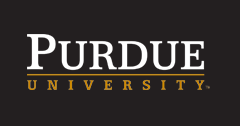Keywords
protein engineering, mussel adhesives, hydrogels, elastin, tissue adhesives
Presentation Type
Event
Research Abstract
Sutures and staples commonly used to close surgical wounds tend to be much stiffer than the surrounding tissue, often resulting in external tissue damage. Surgical adhesives provide a promising alternative to these sutures and staples. Ideal surgical adhesives are biocompatible, able to set well and remain sticky in moist conditions, possess strong adhesive and cohesive properties, and exhibit mechanical properties that mimic those of the surrounding tissue. Unfortunately, the adhesives available today are unable to satisfactorily meet all of these criteria. We are utilizing protein engineering techniques to design, create, and test a new surgical adhesive that combines the adhesive properties of mussels, which are able to strongly adhere to rocks in the ocean, with the mechanical properties of elastin, a protein that provides flexibility to soft tissues in the body. Thus far, a pre-adhesive protein was successfully designed and cloned into E. coli, where it was overexpressed in a fermentor to generate large enough quantities of our protein to be tested. The protein was then purified using immobilized metal affinity chromatography, and the pre-adhesive region of the protein was enzymatically converted to an adhesive region. The converted protein’s mechanical properties are being characterized using dynamic mechanical analysis of our protein in hydrogel form. We were able to use crosslinking chemistry to form hydrogels from a model protein and show that the gelation time and mechanical properties can be tuned by altering the crosslinker concentration and pH. Our preliminary results indicate that our protein does exhibit adhesive and mechanical properties that may be of interest in surgical applications, and we are continuing to further characterize its properties under varying conditions.
Recommended Citation
Haefa Mansour and Julie Liu,
"Adhesive Elastomeric Proteins"
().
The Summer Undergraduate Research Fellowship (SURF) Symposium.
Paper 20.
https://docs.lib.purdue.edu/surf/2013/presentations/20
Included in
Biochemical and Biomolecular Engineering Commons, Biological Engineering Commons, Biomaterials Commons, Molecular, Cellular, and Tissue Engineering Commons
Adhesive Elastomeric Proteins
Sutures and staples commonly used to close surgical wounds tend to be much stiffer than the surrounding tissue, often resulting in external tissue damage. Surgical adhesives provide a promising alternative to these sutures and staples. Ideal surgical adhesives are biocompatible, able to set well and remain sticky in moist conditions, possess strong adhesive and cohesive properties, and exhibit mechanical properties that mimic those of the surrounding tissue. Unfortunately, the adhesives available today are unable to satisfactorily meet all of these criteria. We are utilizing protein engineering techniques to design, create, and test a new surgical adhesive that combines the adhesive properties of mussels, which are able to strongly adhere to rocks in the ocean, with the mechanical properties of elastin, a protein that provides flexibility to soft tissues in the body. Thus far, a pre-adhesive protein was successfully designed and cloned into E. coli, where it was overexpressed in a fermentor to generate large enough quantities of our protein to be tested. The protein was then purified using immobilized metal affinity chromatography, and the pre-adhesive region of the protein was enzymatically converted to an adhesive region. The converted protein’s mechanical properties are being characterized using dynamic mechanical analysis of our protein in hydrogel form. We were able to use crosslinking chemistry to form hydrogels from a model protein and show that the gelation time and mechanical properties can be tuned by altering the crosslinker concentration and pH. Our preliminary results indicate that our protein does exhibit adhesive and mechanical properties that may be of interest in surgical applications, and we are continuing to further characterize its properties under varying conditions.

